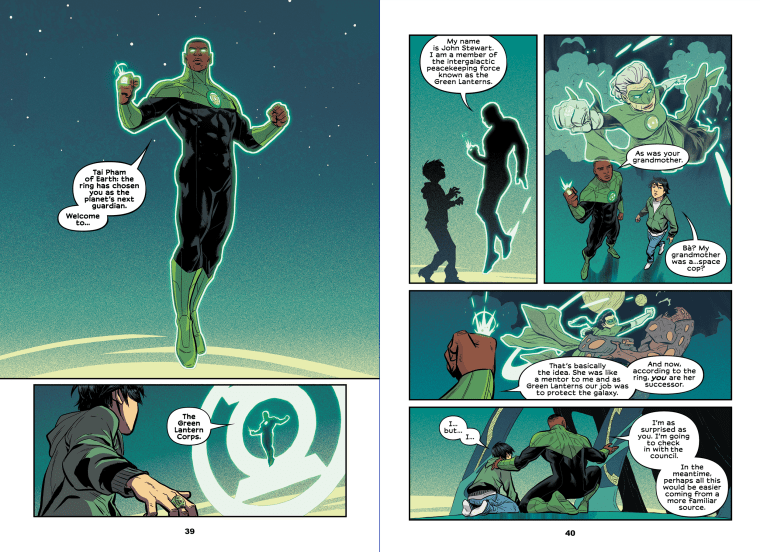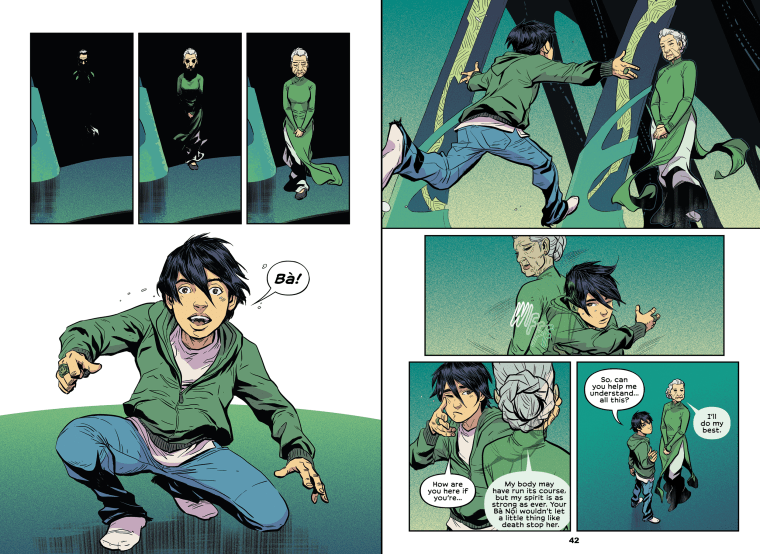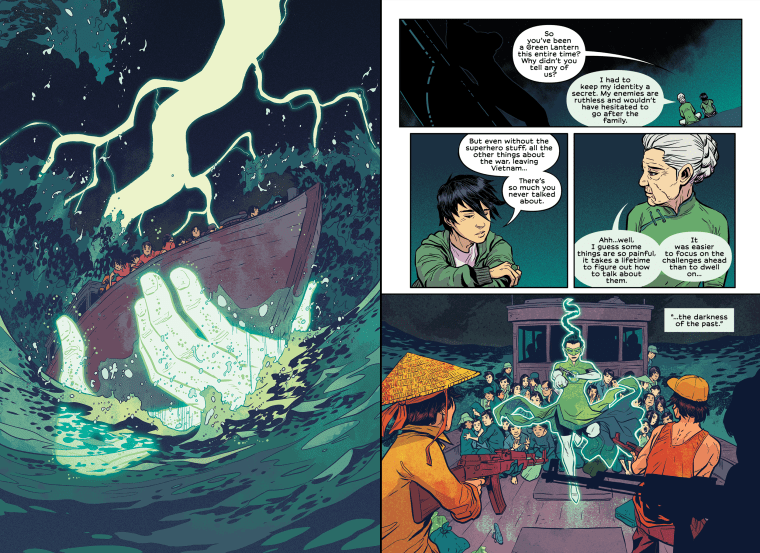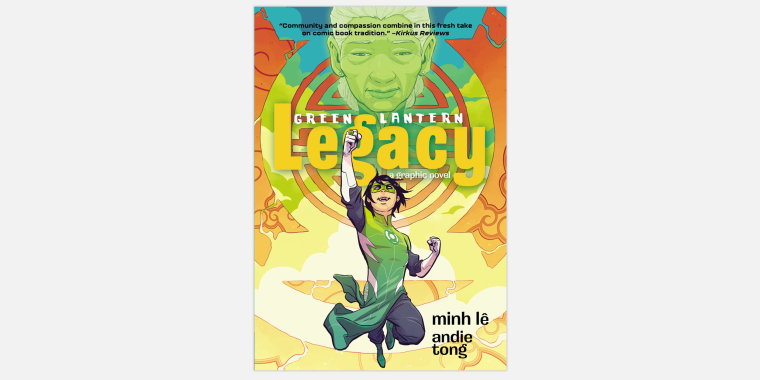When the author Minh Lê began thinking of ways he could put his own spin on the story of the classic DC Comics character the Green Lantern, he suddenly recalled the jade ring his late grandmother always wore.
Lê's grandmother, Ton Nu Tuy-Nhan, had brought the ring with her when she and the rest of the family fled Vietnam as refugees during the Vietnam War. As Lê began developing the storyline for his middle-grade graphic novel "Green Lantern: Legacy," which DC Comics is set to release Tuesday, he realized that making his main character a Vietnamese American boy who is granted supernatural powers through a jade ring he inherits from an elder would be a perfect fit for the story he wanted to tell.
"There was something about that imagery and iconography of the character that felt really familiar," Lê said of the Green Lantern, who was introduced to comics readers in 1940.
"That's when I thought of that image of my grandmother and her jade ring. Once I had that picture in my head, the rest of the story kind of fell into place," he said in an interview.
"Green Lantern: Legacy" marks the first time the character has been depicted as an Asian American. The original comic introduced readers to a white New Yorker named Alan Scott, but in recent years the Green Lantern has diversified. In 2012, readers were introduced to Simon Baz, a Muslim American of Lebanese descent, and the first female Green Lantern, a Latin American woman named Jessica Cruz, was unveiled in 2013.
Illustrated by the Singaporean artist Andie Tong, "Green Lantern: Legacy" explores the story of Tai Pham, an introspective middle schooler who lives in an apartment above the store his grandmother diligently runs. Tai's world is rocked one day when he puts on his grandmother's ring and realizes that he is the Green Lantern. As he comes into his powers, the ordinarily quiet Tai realizes that it is his job to protect his neighborhood from racist bullies while building on the legacy his grandmother began in Vietnam.

Lê, himself the father of two children, said writing the book made him realize just how critical the middle school years can be.
"I always say that kids of this age are very much living their own origin story," he said. "Writing for a middle-grade audience means writing about what it means to navigate the world."
Lê said that as he was growing up in a family of refugees and immigrants, he found it particularly powerful to be given the chance to remake an iconic American character into a story about a Vietnamese American boy and his grandmother. But that responsibility also came with a fair bit of pressure.
"With that meaning comes a lot of anxiety as you are writing," he said. "You're trying to represent a culture that is so personal while also trying to get all of the details right."
A particularly poignant moment occurs when young Tai gets a glimpse of what life was like in Vietnam at the height of the war. Even more shocking is the moment he learns that, as the Green Lantern, he'll be continuing a legacy that began with his grandmother.
"When Tai is introduced to the Green Lantern mythology, they talk to him about creativity, and he says, 'Well, my grandmother was never creative,'" Lê said, adding that it is then pointed out to Tai that migration, by its nature, is a creative act.
"To me, that was a moment to pay tribute to not only my grandmother but to that whole generation of people who uprooted themselves and came to this country with almost nothing but the fortitude and creativity to carve out a life," he said.

It was also personally significant that Lê had the chance to tell a very different story about the Vietnam War from the one typically told to young American readers.
"When you go to the bookstore or library growing up, there's this huge section on Vietnam, but it's all about the Vietnam War. Books about Vietnam as a country and Vietnamese people are only there as the backdrop to American historical trauma," he said. "So to be able to write a story that centers our community — where we're not just background characters or sidekicks but the actual heroes of the story — was really meaningful."
But telling a story that embodied his grandmother's courage came with its own difficulties. As in many refugee families, Lê's relatives were often hesitant to talk about life during the war or the struggles they faced during their early years in the United States.
"The stories of my family's departure from Vietnam in particular weren't stories I grew up with. It wasn't something our family talked about," he said. "I wanted to talk about that, too, because we have such a rich history, but there is also so much pain there."

Ultimately, Lê hopes, readers of all backgrounds and ages will embrace their own powers, superheroic or otherwise.
"Anyone has the potential to be a hero and to step up when it matters," he said. "For readers to come away from this to look at the real-life heroism that surrounds them on a daily basis — that would be a huge win for me."

